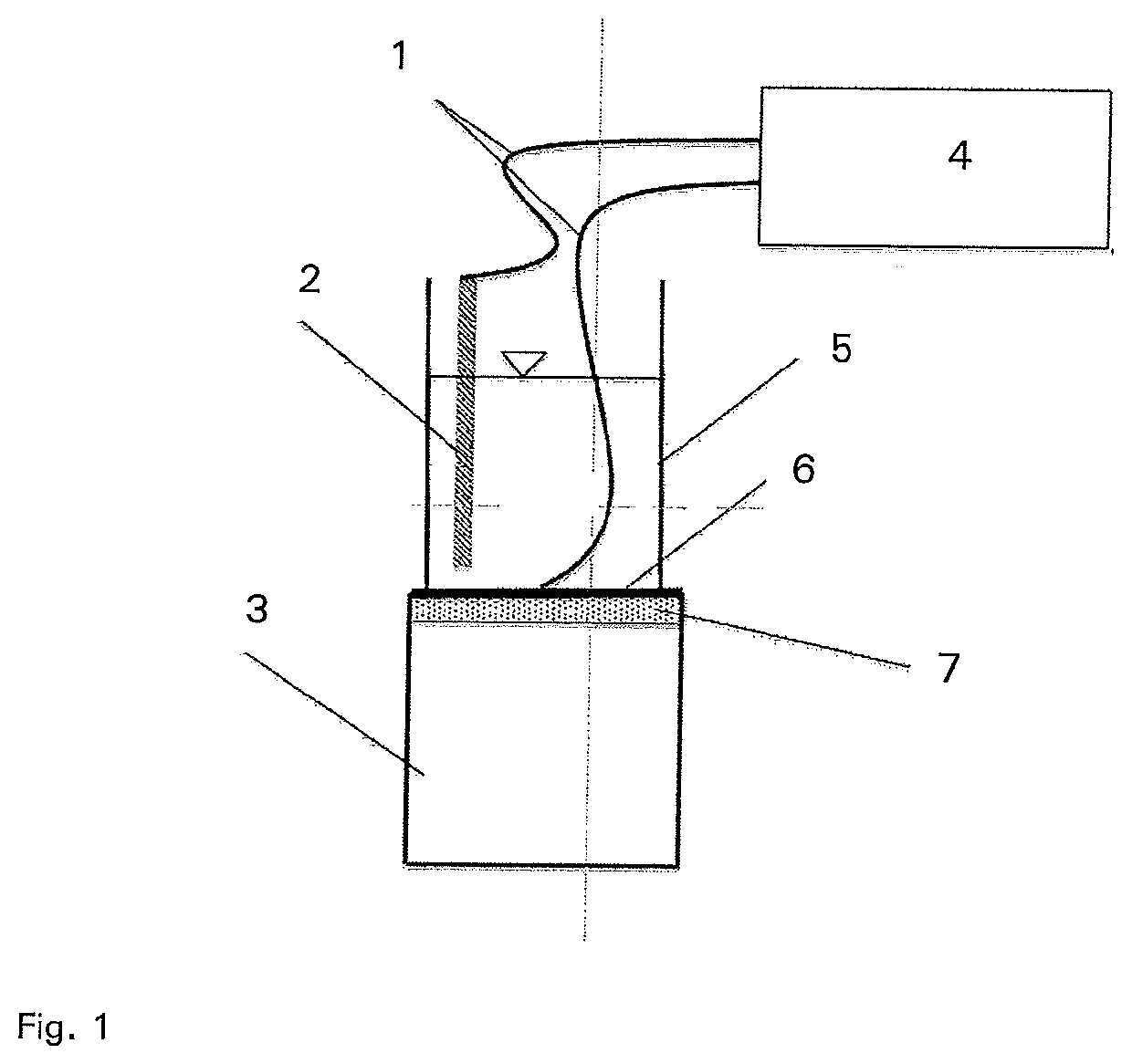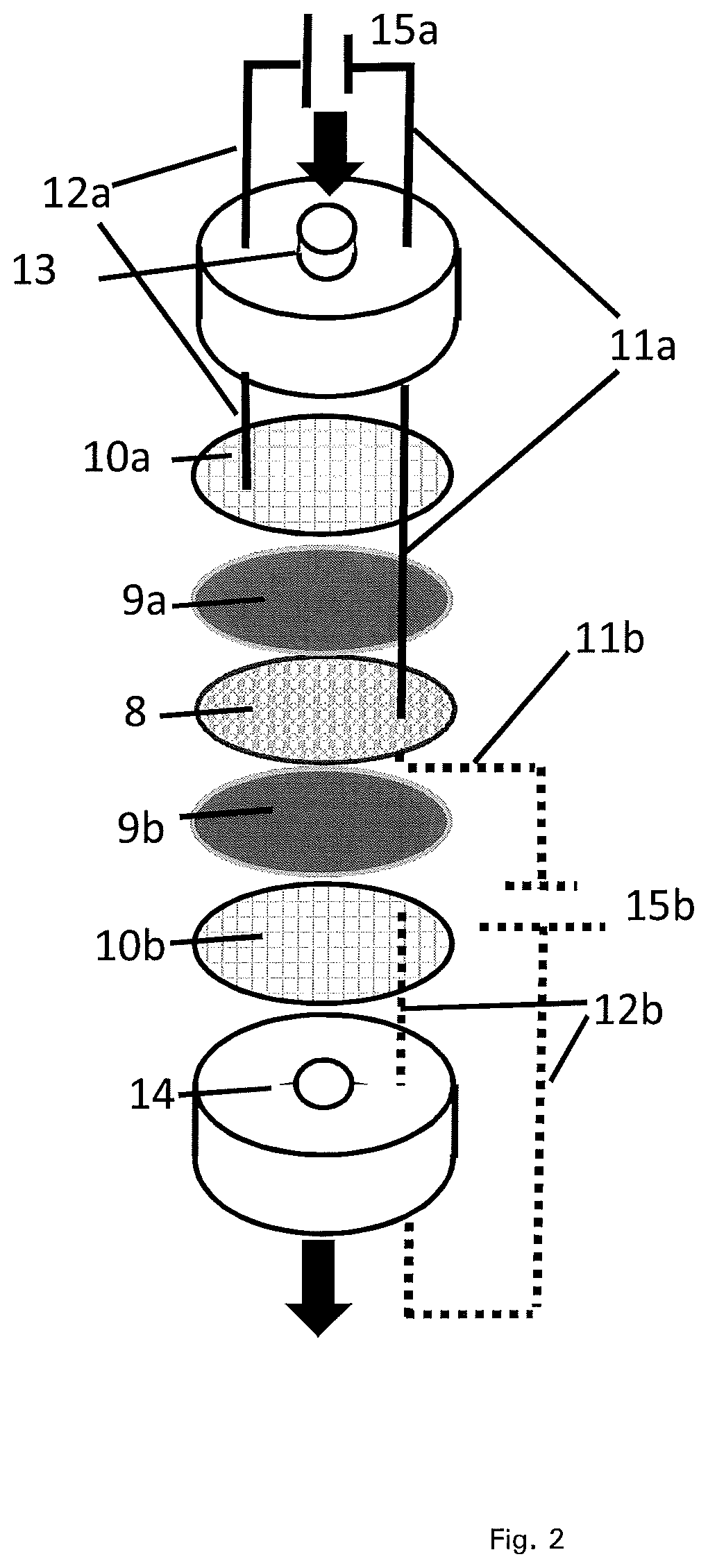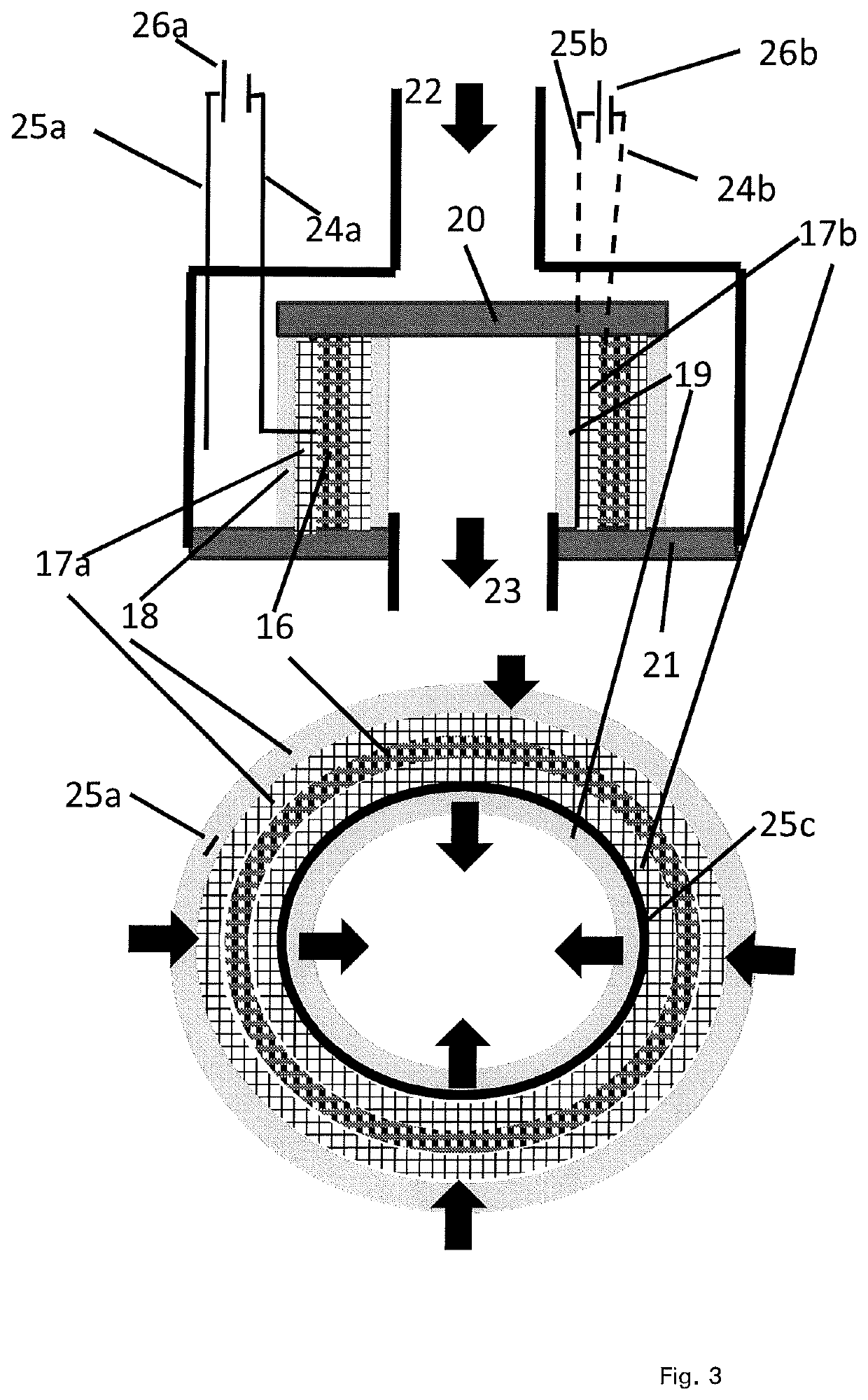Method for separating charged biologically active substances from liquids and the recovery thereof
a biological active substance and liquid recovery technology, applied in electrodialysis, instruments, membranes, etc., can solve the problems of high specific cost, inability to direct determine and inability to directly detect endotoxins in human blood
- Summary
- Abstract
- Description
- Claims
- Application Information
AI Technical Summary
Benefits of technology
Problems solved by technology
Method used
Image
Examples
Embodiment Construction
lass="d_n">[0089]FIG. 1 shows an electrofiltration device according to the invention. The electrofiltration method according to the invention can be carried out with this.
[0090]A liquid is introduced into the receiving vessel (5) and filtered into the collecting vessel (3) through the membrane (6), which is formed by a metal-coated polymer membrane, with application of a voltage, applied by a potentiostat (4), between the membrane (6) that is embodied as an electrode, and counterelectrode (2). The frit (7) serves the purpose of stabilizing the membrane.
[0091]FIG. 2 shows an electrofiltration device according to the invention in the form of a syringe attachment filter. Shown is a circular membrane (8) made of polymer material and metallized on one or both sides. The metallization can be applied to one side, upstream from the membrane (top of the figure) or downstream from the membrane (bottom of the figure), or to both sides. In the case of application to both sides, the metallized s...
PUM
 Login to View More
Login to View More Abstract
Description
Claims
Application Information
 Login to View More
Login to View More - R&D
- Intellectual Property
- Life Sciences
- Materials
- Tech Scout
- Unparalleled Data Quality
- Higher Quality Content
- 60% Fewer Hallucinations
Browse by: Latest US Patents, China's latest patents, Technical Efficacy Thesaurus, Application Domain, Technology Topic, Popular Technical Reports.
© 2025 PatSnap. All rights reserved.Legal|Privacy policy|Modern Slavery Act Transparency Statement|Sitemap|About US| Contact US: help@patsnap.com



